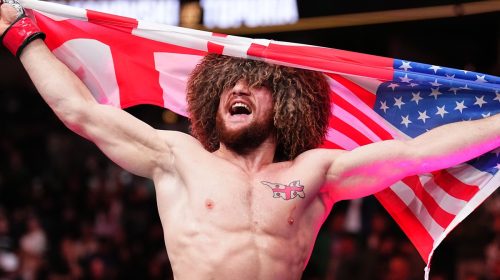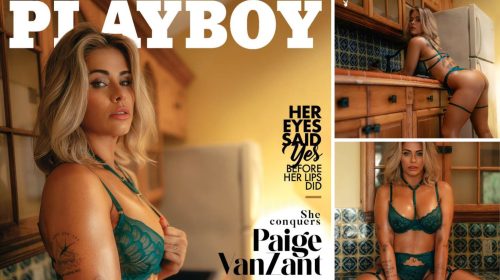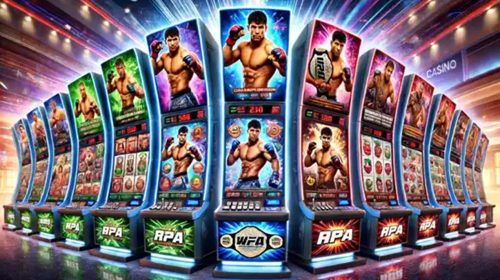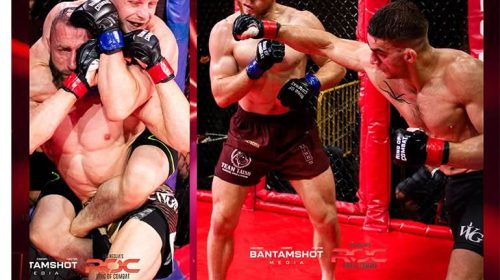
New York Governor Andrew Cuomo and UFC star Ronda Rousey
NYSAC Third-Party Sanctioning Bodies Need to Meet a Level of Standards
NYSAC – New York State Athletic Commission
PART 206 – Commission Powers and Duties
Section 206.1. Power of Commission to control combative sports and professional wrestling
No combative sport or professional wrestling contest or exhibition shall be held within this State except in accordance with law and the rules of the Commission.
Mixed martial arts events have been taking place in New York years before the New York State Athletic Commission (NYSAC) was empowered by New York state Governor Andrew Cuomo signing Senate Bill S5949A, officially permitting professional MMA in the Empire state.

Amateur MMA promoters found what at often times considered to be a loophole which allowed the sport to take place previous to the passing of professional MMA in NYS.
Several amateur promotions in New York were not required to use a sanctioning body to oversee the safety and regulation of fights taking place. This meant that fighters would be entering the cage to battle each other, without having proper medical paperwork or required tests performed, including a physical (ensuring a fighter is healthy enough to be inside the cage), blood work (blood tested to ensure a fighter isn’t carrying any blood born pathogens, ie. HIV, Hepatitis, etc.), medical history of a fighter, and for female competitors, a pregnancy test.
Since the passing of S5949A, the NYSAC issued licenses to third-body sanctioning bodies to oversee amateur MMA in the state. So far, seven licenses have been issued by the NYSAC. Unfortunately, numerous events have taken place in which fighters continue to be left at risk.
The main priority of a sanctioning body is to ensure the safety of the participants from the promoters, plus to regulate a fair platform for the fighters, promoters, and fans to enjoy.
After reading on Facebook and hearing countless eyewitness accounts of several events throughout NYS, it was required to address these issues to the New York State Athletic Commission about the protocol of governing a sanctioning body in which they oversee.
How are these sanctioning bodies being vetted to earn prestigious NYS licenses of certification to sanction amateur events?
So I took the liberty of contacting NYSAC Commissioner John Signorile directly to see if we could find some sort of resolution or answers to the questions that are being asked.
The Department of New York State required the Commissioner to send all questions directly to the press department. These answers are from the Director of Communications, New York Department of State/NYSAC, Laz Benitez.
6/9/17- NYSAC Questions:
1) What is your thought so far on MMA in NY, since becoming legal?
Since MMA’s legalization in New York State last September, the state has hosted six at or near capacity MMA events under the Commission’s jurisdiction. The Commission began from the ground floor to develop a game plan that would be fully executable once the sports was legalized, with fighter safety and the integrity of combative sports being our top priorities. After exhaustive work, preparation, consultation with other states and a multitude of industry experts, the Commission put together a framework for regulating MMA in New York State. Thanks to our dedicated staff, which has worked tirelessly to meet the demand of MMA fans for events throughout the state, we look forward to providing a premier regulatory atmosphere for world-class athletic competition and continuously improving on our operations. As with every new venture and opportunity, there have certainly been instances during these events that the Commission has learned and grown from, as to be expected, but we look forward to more successful MMA events throughout the State for months and years to come.
2) What crew do you plan to assign to the UFC card coming to Long Island in July?
The full crew has not been assigned as of yet, but it will include many of the same officials and staff that have worked previous events in New York.
My next question came from a Facebook post that I had noticed in my newsfeed. It struck me as odd because of what a fighter stated in his post. “Opponent steps on the scale at 199 (14 lbs. over). The promoter asks me what I want to do.”
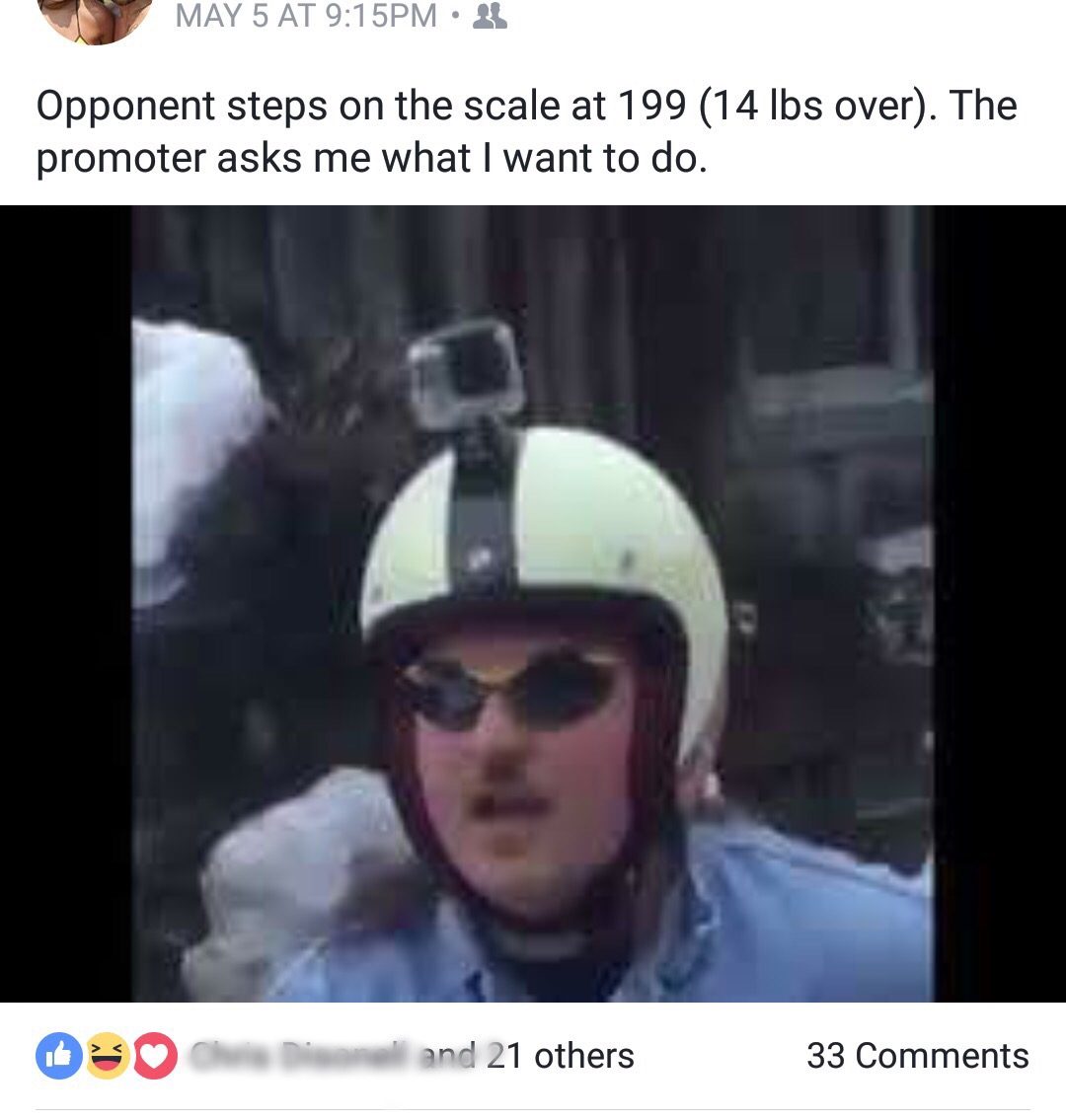
After reading that Facebook post, questions began to pile up. The first question which came to mind though is ‘Why would the promoter be asking a fighter what he wants to do?’
Pump the brakes. Isn’t this why the third-party sanctioning body were created?
My second thought was, ‘There has to be a rule, especially in amateur MMA, against allowing that amount of a weight disparity at an official weigh-in and for a fight to continue to take place.’
After investigating which promotion the fighter fought on and which third-party sanctioning body they used, I had found out it was an Upstate New York promotion with very little experience running and regulating MMA events.
Since the NYSAC does not require unified amateur rules, several of this particular third-party regulator’s rules pertaining to weigh-ins and other matters vary. Having no luck receiving a response to my e-mail, I was finally contacted by the Director of the Sanctioning Body after asking the NYSAC this question.
3) NUWAY, a third-party sanctioning body recently from upstate NY allowed a fighter to fight after missing weight by 14-pounds. Isn’t that against the rules? Don’t they have to be within a few pounds in order to allow the fight? NUWAY is also an Ohio-based youth wrestling sanctioning organization. How did they receive a license to sanction MMA in NY without ever overseeing an event?
The Commission is looking into that allegation, which as of the moment is unsubstantiated. Generally-speaking, sanctioning bodies submit proposed cards 10 days before an event and follow-up with event results that clearly display the weights of all combatants within 48 hours after the event. The only division where a disparity of more than 15 lbs. is permitted is the Super Heavy division. The requirements for obtaining a combative sports authorized sanctioning entity license are listed on the application, which is posted here: http://www.dos.ny.gov/forms/athletic/en/2056-f-a.pdf.
The allegation of a fight taking place where a fighter weighed in 14-pounds over is substantiated by a fighter stating the fact that it happened via a Facebook post and then by video evidence of the actual fight taking place, which was posted by the promotion itself to YouTube.
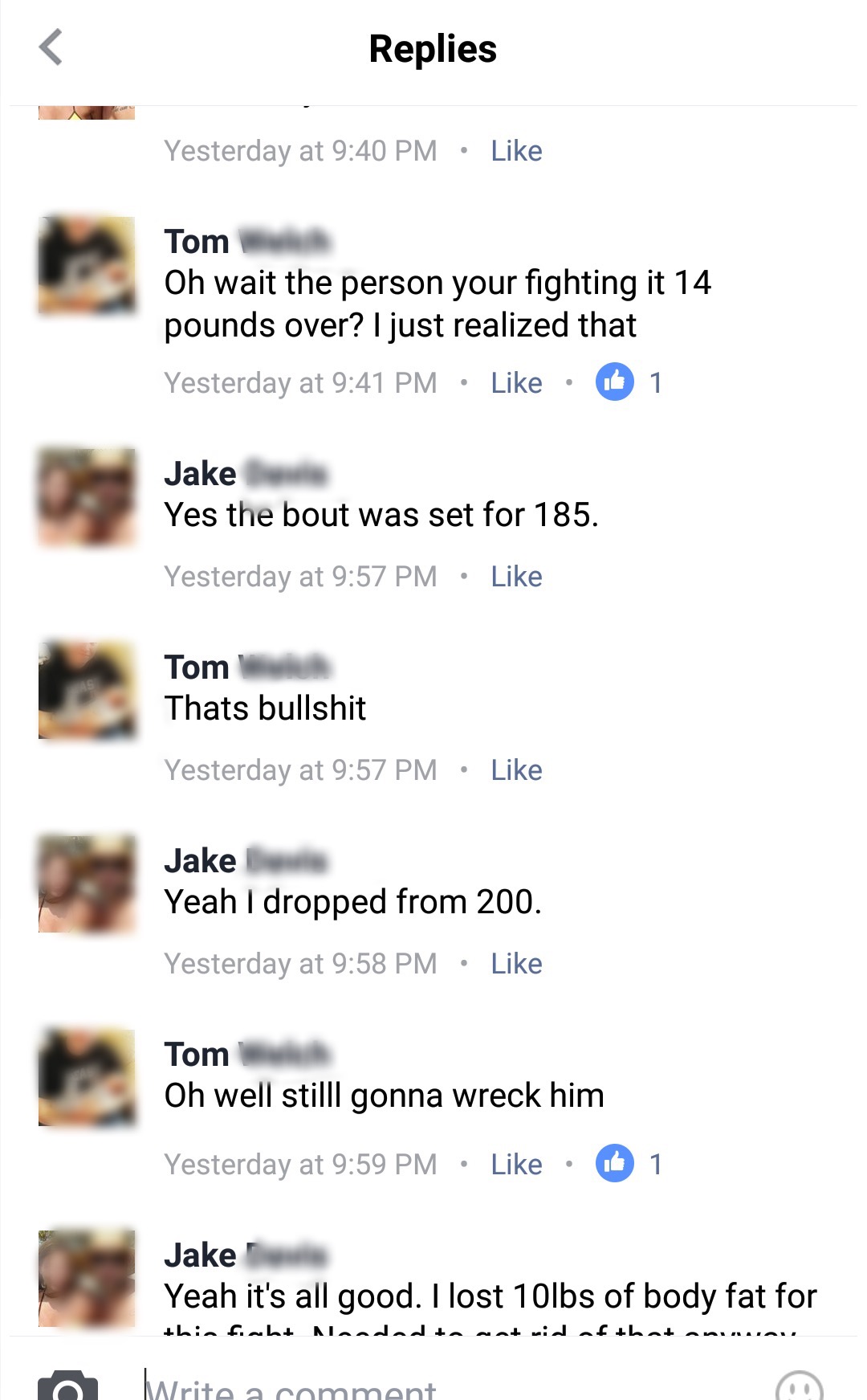
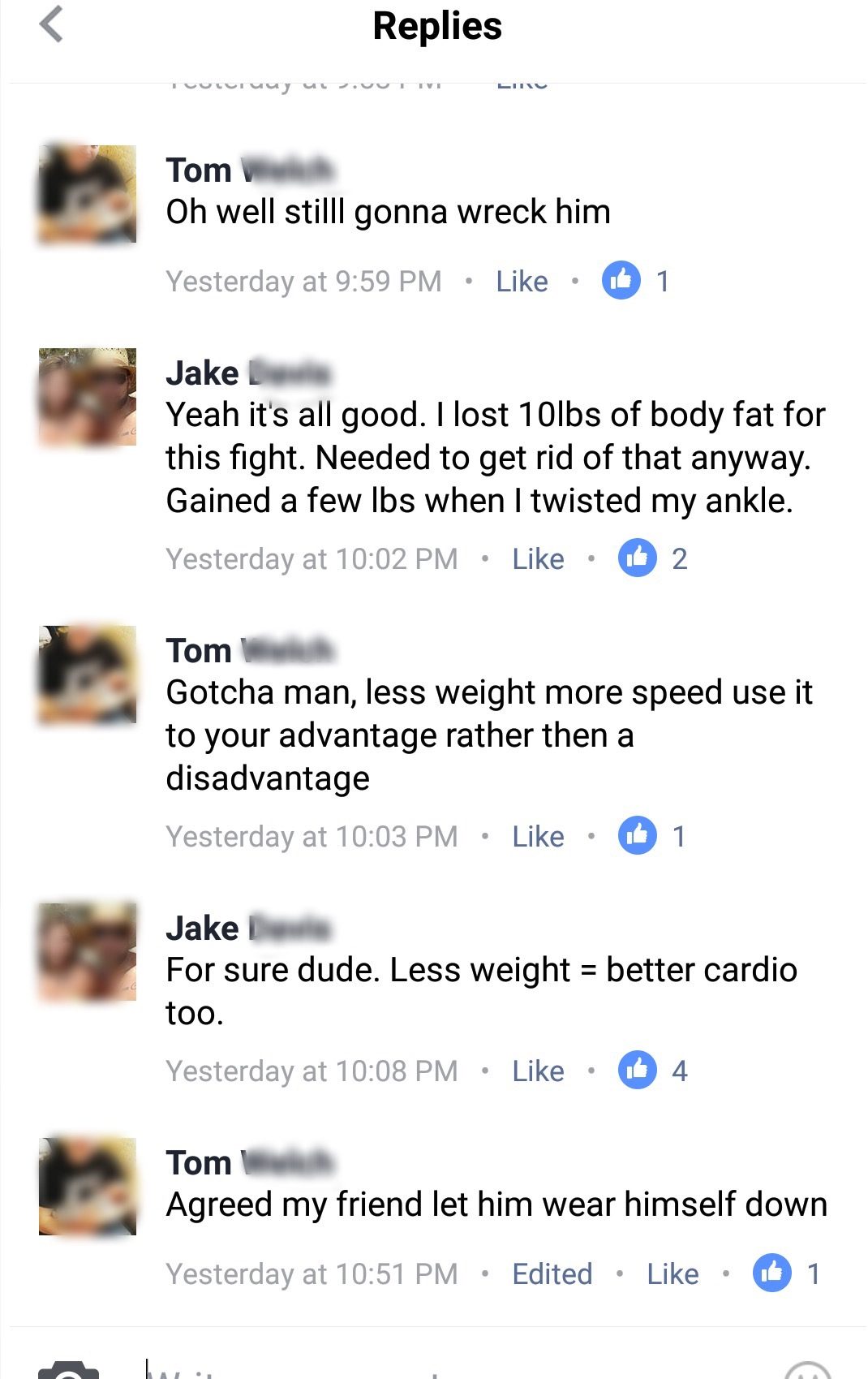
Before receiving the answers to the questions I sent to the NYSAC, unknownst to me, an individual from the NYSAC questioned the Director of NUWAY, Forrest Hobbick. While finally talking to Hobbick, I asked for a copy of the rules that the regulation follows. MyMMANews.com was informed that NUWAY’s rules are confidential.
I was told that the NYSAC, fighters, and NUWAY inspectors were the only parties that obtain a copy of the rules.
“NO…. Absolutely not,” Hobbick said. “We keep them to ourselves. I’m not gonna allow it. There are six people that have the list of rules and regulations. The athletic commission is one of them. The promoters, myself, my assistant, we have it. I don’t allow anybody to have it because I’m not going to give it to the U.S. Muay Thai Association. I’m not gonna let it fall into their hands. I’m not going to let them know where there are things that they overlooked. Things that can make them better. I’ve been offered their rules and regulations. I don’t want it. Their business is their business. It’s a privacy thing. I don’t want it falling into a competitor’s hands. I can tell this, I was told flat out by the New York State Athletic Commission that our rules and regulations are spot on and that they were head and shoulders above what anybody else has submitted.”
I understand what you are saying, but at the same time, my thought process is, ‘Wouldn’t you want the fighters, the public, the media to know what your standards are?
“The fighters know what the standards are, the promoters know,” Hobbick said.
As a reporter and fan, not presenting the rules to the public is like going to a football game and when you see a flag thrown, someone asks you “What’s the flag for?” Your only response can be “I don’t know, they won’t share the rules with us.”
Plus, the rules are in place to protect the fighters safety from various vulnerabilities, but if the fighters, promoters, inspectors, and NYSAC are the only ones with them. That is not good enough!
Hobbick talked about the fight with the 14-pound weight differential.
“The guy who is heavy has to come to a particular spot. Now I said, ‘We will allow whatever it was for the 185-class. He has to at least get to here for middleweight to allow the bout.’ But that doesn’t mean it is a bout. The opponent’s coaches and the opponent have to agree to the fight when he makes it to that point. So they all discussed it and blah, blah, blah, blah, blah, the fighter went on, he cut weight, he came back. He got within what we would allow and the opponent took the fight. Then the opponent gets beat and he goes and celebrates on Facebook, whatever, however it freakin’ happened I don’t know but it is what it freakin’ is. Everybody made weight. The guys who don’t cut weight, they don’t fight.”
Watch the fight below:
When it comes to fighters cutting weight, it should be clear to everyone as what the rules are allowing a fighter to fight in a bout after missing weight. And, another question I was curious to ask was if the NYSAC told NUWAY’s State Chairman that their rules were spot on, why did they have to change them to accommodate another sanctioning body’s director complaining.
Many questions still left to be asked, and the most important question of them all is, ‘What are the rules?’
5. Will instant replay be something introduced into MMA manuals?
Commission rules and regulation are periodically updated on its web site, but the Commission has broad authority to use any means to determine the correct outcome of a fight.
By no means was the referee at fault. The Athletic Commission though needs to be very clear as to when instant replay can be used and when it can not be used. The statement “the Commission has a broad authority to use any means,” can be interpreted in a BROAD range of ways.
6. Shouldn’t sanctioning bodies require officials, inspectors taping, approving the glove taping, supervising locker rooms, warm up areas, and their timekeepers be ABC trained?
Yes, They are required to oversee all aspects of the event.
7. Will NY state make it available to the public every official, referee, and supervisor within a sanctioning body’s credentials and certification (time certified and time expiring)?
Disclosures to the Commission are confidential.
8. Safety is the number one priority for every fighter, what changes or classes or courses will be created to ensure the fighters safety is number one, especially fighters on the amateur level not making any money off their fights?
Protecting the health and safety of youth and amateur athletes is the responsibility of everyone involved – coaches, trainers, managers, promoters, sanctioning entities, gym owners and, of course, the State Athletic Commission. The biggest change is that amateur events can only take place under the supervision of a third party sanctioning entity licensed by the Commission. This regulatory structure has been in place only since September 2016. The Commission is currently reviewing the oversight of amateur and third party sanctioned events and will develop appropriate measures to respond to the need to protect the health of safety of fighters.
9. What is NY state doing to further improve the safety of fighters at approved areas? A fighter at an amateur event was nearly killed by a light fixture falling from the ceiling.
Regarding the scenario you described above, the Commission only has jurisdiction over professional MMA and boxing events in New York State. It is the sole responsibility of the Sanctioning Entity to approve the venue prior to any pro-MMA or boxing match.
The Commission has taken a number of recent regulatory actions to ensure that the safety, well-being and health of its licensed combatants comes first and foremost. In preparation for MMA’s debut, the Commission created a Medical Emergency Action Plan (MEAP) to ensure that the Commission and its employees, and other stakeholders, effectively mitigate and respond to medical emergencies at professional combative sports events that are overseen by the Commission. The plan outlines the responsibilities and duties of the Athletic Commission and its employees, and informs and empowers them to act quickly and knowledgeably in the event of a serious and or, potentially, life-threatening injury to a combatant. It also informs NYSAC licensees – officials, promoters, combatants, managers – and other key stakeholders of the Commission’s protocols to be followed before, during, and after a medical emergency. The MEAP will be regularly updated and made available to all staff and stakeholders. NYSAC staff is trained regularly as to the protocols included in the plan. The Commission also added a new permanent position of Assistant Chief Medical Officer, which is a full-time physician on staff, to compliment the Chief Medical Officer and panel of ringside physicians in ensuring the health and safety of athletes is kept at the forefront of the Commission’s regulatory mission. In addition, the Commission worked in partnership with the Office of the Inspector General to ensure that all of its staff, commissioners and inspectors received training on public integrity and ethics rules.
The reason I went ahead and asked this question is that recently at an event in Queens, NY, Extreme Cage Fighting (ECF), a smaller NY amateur promotion, didn’t provide adequate space for the fighters to warm-up and while the fighter was inside the cage warming up, a part of the ceiling fell crashing into an athlete and nearly killing him. The athlete’s ribs were broken and need immediate medical assistance. When the coaches mentioned that they were bringing their athlete to the hospital, the promoter visibly panicked because an amateur athlete, fighting for free on his promotion, needed medical attention.
Imagine if this piece of the ceiling came crashing down on two athletes in the middle of a fight or if the debris came crashing down onto spectators. This isn’t any sanctioning bodies fault for the piece of the ceiling falling off, but these promotions should be informed that if you decided to host a fight in an unsafe environment, you will not be sanctioned. There is enough time in advance when booking these venues for a simple drive over to the location to take a peek at the overall quality.
10. Will a state official be all sanctioned events?
Although the Commission cannot have a presence at every licensed event, it does conduct random checks on all licensees as permitted.
Obviously knowing the limited resources the Department of State of New York State Athletics has, it would be tough to attend every event. Though random checks are important to ensure these third-party sanctioning bodies are delivering the proper service which will translate the into the safety of all individuals participating in the event.
I’ve been to numerous events in the last six months and I can personally say I’ve only seen an official at one promotions event, excluding the Bellator MMA event at Madison Square Garden that I attended.
The event they attended is one of the premier events in New York State, regulated by one of the sanctioning bodies with the highest standards. It may be because they are trying to see what kind of standards a sanctioning body should live up to, but that is speculation on my part.
11. Will gym owners and coaches have to be required to become certified with the state? Or at least take a course?
Only gyms and training facilities where professionals train and spar and trainers of professional fighters are required to obtain a license from the Commission.
This is an important question. The reason is that you’re participating in supervising a sport in which athletes under the coaches and gym owners care, where these athletes place themselves at risk. Note, these athletes are nearly all adults, but in high school football, the coaches are required to be certified in CPR and First aid, concussion protocol, in addition to knowing the rules of the sport. For a simple three hour course that will teach an abundance of information, coaches especially, should be certified in the ABC course. Most gyms that have amateur fighters, have professional fighters in it as well, since the pros are the only ones generating any cash value, but there is a real problem with coaches and gym owners not being certified.
Numerous fighters have unfortunately passed away from some form of participation in the sport and families seek answers in the court of law as to who is responsible for neglecting the fighter and allowing them to perform extreme methods. This course will not only open the eyes to coaches and owners but will also protect them from a possible liability, God forbid.
Standards of Professionalism
Standards of Professionalism comes from the various sanctioning bodies which aren’t holding themselves to the highest of standards. While covering an event, I witnessed a Judge, Timekeeper and the head official crushing French fries and chicken fingers during a bout. To be eating during an event as an official is highly unprofessional. If the Judge looks down to pick up his chicken finger to take a bite and misses a kick or takedown or a single strike, it could possibly decide which fighter won the bout because they saw it differently.
If a Timekeeper takes their eyes off the action to eat french fries, they could potentially miss the referee signal for a timeout and now we are talking about a fight that has been shortened drastically and can definitely have an influence on the outcome of the fight. No cell phones, food or anything not required to perform the task at hand should be sitting on the table in front of any official cage side.
In addition to not paying attention, everyone associated with the sanctioning body should be certified. They should be wearing a respectable uniform and well-groomed. No one should have purple hair, their shirts untucked from their jeans. Be presentable to the fans that are witnessing those in charge of the events. Be professional.
Being professional also involves having the appropriate number of employees working an event. This includes inspectors in every dressing room. This will prevent fighters from packing their gloves against a hard surface, coaches placing too much Vaseline on a fighter or in some cases placing Vaseline on the fighter’s legs and arms. The reasons why inspectors should accompany a fighter from the moment they arrive until they enter the cage can be listed for days. The cage also needs to be checked. In Illinois, two fighters fell through the cage. It wasn’t inspected and the cage wasn’t assembled correctly. It might cost more initially to pay for a few extra supervisors but would promoters rather pay them or pay out in court to an injured fighter.
Exhibition Fights
An exhibition fight is still under the supervision of the sanctioning body in charge of the event. According to section 206.1 an exhibition bout still has to be governed by the state law. Therefore the sanctioning body overseeing the event is responsible for the two fighters inside the cage. This means they are required to present medicals, which includes blood work and be of legal age to fight. It’s been rumored that around the state, fighters that haven’t made weight or showed up with medicals have been allowed to fight inside the cage at the same event. The liability is astronomical if that occurs.
Rules Among the Different Third-Party Sanctioning Bodies
When the NYSAC took over MMA they were unsure of how to proceed with amateur MMA. They allowed third-party sanctioning bodies to govern the events. Allowing this to occur is a great job creator and allows flexibility for promoters hosting shows in various locations throughout the State of New York. As a fighter, their biggest is the different rules among the different sanctioning bodies. For instance, the novice rules for all third-party regulators varies.
For instance, the novice rules for all third-party regulators varies. Novice amateur rules require fighters to wear shin guards, in addition to not allowing strikes to the head of a grounded athlete. So, if the fighter earns a takedown, and they climb into full mount, they can not strike the head of their opponent. I’m a firm believer that the grounded opponent can’t strike the person in full mount, in the head as well.
One sanctioning body requires only two bouts under novice rules. They and their opponents must each have to fights in order to compete at advanced amateur rules. Another sanctioning body requires you to have at least three wins in order to fight advanced rules and the third that I know of because he mentioned it on the phone, requires a fighter to have at least a 25% winning record in order to fight advanced. So, a record of 2-6 you can fight advanced, but a record of 2-7 you have to participate in a novice rules fight.
I requested a set of rules from all seven third-party sanctioning bodies in the State of New York. We wanted to compare the difference in rules among each party and see why the NYSAC hasn’t spoken with all seven parties and propose a unified set of rules. The USMTA emailed their rule book to My MMA News within five minutes of requesting it. The WKA directed My MMA News to a promoter, where we obtained a copy of their sanctioning bodies rules. The American Kickboxing Federation responded to my request but blocked me after requesting a copy of the rule book. NUWAY’s state director, Forrest Hobbick, as per mentioned earlier in the article refused to send me a copy of their rule book. A Freedom of Information Act was filed with the NYSAC for a copy of the NUWAY rule book. The other three sanctioning bodies have yet to respond to the information requested.
Shouldn’t all seven third-party sanctioning bodies be following the same set of rules presented to them by the NYSAC? I, among many others, believe so.
Should Promoters and/or Gym Owners Be allowed to be Directors of a Sanctioning body?
Should gym owners be allowed to apply for a sanctioning body license? No, coaches and gym owners should not be allowed to file for a license. If they are allowed to, they shouldn’t be allowed to have any fighter training in their gym fighting on the card, not matter the length of time they train at the gym. The conflict of interest is too large to allow that to occur. For example, if I train drastically
For example, if I train just as hard as a fighter on the other team but his coach is also in charge of the sanctioning body, which includes the referee, Judges, timekeeper, and doctors, shouldn’t I feel skeptical as to how fair the bout will be judged? Especially, if the bout goes to a split decision, how could a fighter not feel like they were robbed of a win?
Should promoters process a sanctioning body application in hopes to be certified, should they have any control of the sanctioning body when the governing body is working their promotion? My personal belief is another individual should have complete authority over the sanctioning body during the promoter’s event. And, at a couple of promotions, that’s how it works. They have zero control over anything related to the sanctioning body, and another individual has complete authority. The promoter is the promoter and the sanctioning body’s director is the director.
Should an individual in charge of a sanctioning body have a criminal background? if the crime is nothing serious and isn’t a felony, I personally don’t see the harm in it if it’s relative. Though, if the individual is a felon, He should not be the one receiving the license as the Director. Say the crime does involve MMA events, gyms, fighters, or anything related to the sport in any form, that person should not be issued a license ever.
These are all questions that should be brought to the attention of the NYSAC when they decide on a sanctioning body’s applications.
Here are two links to the Amateur Mixed Martial Arts Sanctioning Entity License Application Supplement
and to the NYSAC rules.
What’s the Future of New York State Amateur MMA Sanctioning bodies?
I think the third-party sanctioning bodies offer numerous pros to the NYSAC. Unfortunately, there are many cons that come along with it as well. If the standard is elevated to make all parties meet a minimum requirement set forth by the NYSAC, it will continue to elevate the great state of New York when it comes to MMA.
As per mentioned in the article, these questions answered from the NYSAC are not from the Commissioner. They are all answered by the Department of State Director of Communications, Laz Benitez.
Below is more information e-mailed to us at My MMA News by the NYSAC’s Director of Communications.
PART 214 – Authorization of Third-Party Sanctioning Entities Section 214.1. Purpose. The purpose of this Part is to establish a process by which entities may be licensed as recognized and approved by the Commission to serve as Authorized Sanctioning Entities to supervise and oversee the conduct of certain authorized combative sports in the state of New York. Section 214.2 Definitions As used within this Part, the following terms shall have the meanings provided herein: a) “Commission” means the New York State Athletic Commission or a duly authorized representative thereof. b) “Authorized Sanctioning Entity” shall mean an entity licensed as such by the Commission to supervise and oversee the conduct of one or more specific authorized combative sport(s). c) “Entity” means a person, organization, partnership, limited liability company or corporation. Section 214.3. License required No entity shall sanction or hold a match, exhibition or otherwise oversee or conduct a combative sport without having been authorized to do so by the Commission. Section 214.4. Application for License (a) An entity may make an application for a license to supervise and oversee the conduct of matches and exhibitions of one or more of the following authorized combative sports: wrestling, kickboxing (including muay thai), amateur mixed martial arts, and the single discipline martial arts of Judo, Tae Kwon Do, Karate and Kempo. (b) Upon application therefore, the Commission may license an entity as an Authorized Sanctioning Entity for one or more of the authorized combative sports listed in paragraph (a) above, as deemed appropriate by the Commission based on the results of the Commission’s review of such application. The application shall be made on a form prescribed by the Commission and affirmed by the applicant as true under penalties of perjury. Such application shall include information related to the following categories, among other documentation and information that may be required by the Commission: 1) The entity’s stated mission and primary purpose; 2) The entity’s business address and the names of each principle, officer; partner or member thereof 3) The authorized combative sport(s) for which the entity seeks authorization and the rules and protocols associated therewith; 4) The entity’s policies, protocols and requirements with regard to the combatants’ use of hand, foot and groin protection, or other safety gear; 5) The entity’s policies, protocols and requirements with respect to the termination of any combative sport when any participant has endured severe punishment or is in danger of suffering serious physical injury; 6) The entity’s policies, protocols and requirements to effectuate the appropriate and timely medical treatment of injured persons. 7) The entity’s policies, protocols and requirements with respect to the presence and responsibilities of a licensed physician at each bout, contest, match or exhibition; 8) The entity’s policies, protocols and requirements with respect to the use of performance enhancing drugs and illegal substances by participants; 9) The entity’s policies, protocols and requirements with respect to pre-competition physical examination by a licensed physician, including but not limited to cardiac and neurological evaluation; 10) The entity’s policies, protocols and requirements with respect to pre-competition medical testing for blood and bodily fluid borne communicative diseases such as HIV and Hepatitis; 11) The entity’s policies, protocols and requirements with respect to the availability of appropriate emergency medical personnel, equipment, and ambulance transportation; 12) The entity’s prior experience in the oversight, conduct of combative sport(s) or its expertise with respect thereto; 13) The entity’s trustworthiness and competence to oversee or conduct a combative sport; 14) The entity’s requirements with respect to the provision of accident insurance covering combatants, and a demonstration that the entity’s requirements are in compliance with the minimum requirements for the conduct of combative sports as set forth in section 208.16 of the Commission’s regulations; 15) A description of the entity’s operational history and past performance overseeing and conducting combative sports matches or exhibitions of the type being applied for, including a list of matches or exhibitions the entity has sanctioned or overseen in New York State and any other state within the past 5 years; 16) Other documentation, data, policies, rules, and other exhibits as may be required by the Commission; and 17) A non-refundable application fee as prescribed by the Commission. (c) In addition to the grounds stated in section 214.7 of this Part, the Commission may deny an application upon a finding that the entity has failed to demonstrate sufficient trustworthiness and integrity, or based upon the entity’s failure to provide information and representations sufficient to demonstrate and assure the establishment, exhibition and maintenance of appropriate financial, medical, organizational and operational capacity and controls at matches or exhibitions to be overseen by such entity. (d) An applicant for an Authorized Sanctioning Entity license seeking to engage in the oversight and conduct of an authorized professional combative sport shall execute and file with the secretary of state a bond in an amount of ten thousand dollars ($10,000), to be approved as to form and sufficiency of sureties thereon by the secretary of state, conditioned for the faithful performance by said person or entity of the provisions of Article 41 of the General Business Law and the rules and regulations of the Commission. In addition, such applicant shall execute and file with the secretary of state a bond in an amount of twenty thousand dollars ($20,000) to be approved as to form and sufficiency of sureties thereon by the secretary of state, conditioned for and guaranteeing the payment of professionals’ purses and the legitimate expenses of printing tickets and all advertising material. All such bonds must be in effect on the date of licensure. Any lapse or expiration in either bond during the license period shall be cause for immediate license suspension until such bond is renewed or a new bond is filed, approved, and in effect Section 214.5. Commission action on application and term (a) The Commission shall grant or deny a complete, original application for such a license within 120 days of its receipt thereof. A failure of the Commission to observe the time limitations of this subpart shall be reviewable in a proceeding in the nature of mandamus under article 78 of the Civil Practice Law and Rules and shall in no event be construed as an application approval. (b) Unless revoked or suspended, a license as an Authorized Sanctioning Entity shall be valid for a term of two years from its date of issuance. Such license may be renewed by application therefor for an additional two year term. Such renewal application must be received by the Commission not less than 30 nor more than 60 days prior to the expiration date of the license. Section 214.6. Scope of Authorization (a) An Authorized Sanctioning Entity may oversee or conduct only those specific authorized combative sport(s) for which it is licensed by the Commission. (b) Upon application therefore, the Commission may modify the scope of a license to include additional authorized combative sports other than those initially applied for upon the application of an approved Authorized Sanctioning Entity at any time during the organization’s period of licensure. (c) Upon request of an authorized sanctioning entity, or upon a finding by the commission of a ground listed in section 214.7, the Commission may modify the scope of a license to remove one or more authorized combative sports. Section 214.7. Grounds for Denial and Disciplinary Action An application for license as an Authorized Sanctioning Entity may be denied, and a license issued by the Commission may be suspended or revoked and a fine imposed, for any of the following: (a) A violation of Article 41 of the General Business Law and any rules or regulations promulgated thereunder; (b) In recognition of any suspension, revocation, or other disciplinary action taken by the State of New York or any other state against any license, certificate, or other approval held by the entity; (c) A failure to have appropriate legal authority to conduct business in New York State; (d) A failure to satisfy, comply or fully cooperate with a Commission review, request for information, inquiry, or inspection; (e) For sanctioning any match or exhibition that involve activities beyond the scope of the license issued by the Commission; (f) A failure to adhere to the assurances or representations contained in the entity’s application for license or license renewal; (g) A material misstatement or omission within the entity’s application for license or license renewal; (h) A failure to exhibit or maintain appropriate financial, medical, organizational and operational capacity and controls at bouts, contests, matches or exhibitions; (i) A failure of the Authorized Sanctioning Entity to maintain a satisfactory record of integrity and safety; (j) A failure to require or enforce all generally accepted rules applicable to the combative sport sanctioned; (k) Engaging in fraud or fraudulent practices, or for dishonest or misleading advertising, availing the entity’s license to another, or for demonstrated untrustworthiness or incompetency in relation to professional matches and exhibitions involving combative sports; and (l) Engaging in any activity which is detrimental to the health, safety and well- being of a martial arts participant, or which is detrimental to the public health, safety and welfare. Section 214.8. Recordkeeping An Authorized Sanctioning Entity shall maintain appropriate records of matches and exhibitions sanctioned, including but not limited to the following: descriptions and documentation of each sanctioned event, match or exhibition, which shall include information regarding: the martial art involved; the legal name and ring name of each participant; the name and address of the venue at which the match or exhibition is held; the name and business address of the promoter(s) of the match or exhibition; the results of the individual matches held; the rules under which the event, match or exhibition was conducted; a record of whether any injuries were sustained by participants; and the medical and emergency personnel, vehicles and equipment present. For amateur mixed martial arts matches, the authorized sanctioning entity shall ensure and require that all combatants must be registered with the national mixed martial arts registry and/or database as officially designated by the Association of Boxing Commissions, and all match results must be reported to such registry and/or database within 48 hours of the match by the authorized sanctioning entity. Section 214.9. General requirements a) Insurance: For each bout, contest, match or exhibition, an Authorized Sanctioning Entity shall assure or maintain accident insurance conforming to the requirements set forth for combative sports at section 208.16 of these regulations. b) Attendance by Licensed Physician: An Authorized Sanctioning Entity shall ensure that at least two physicians are in attendance at ringside for the duration of each professional bout, contest, match or exhibition, and shall otherwise ensure that all matches or exhibitions overseen or conducted shall conform to the requirements of section 208.16 of these regulations. c) Availability of Emergency Services: An Authorized Sanctioning Entity shall insure the presence of appropriate emergency medical personnel consisting of at least one paramedic, equipment, and the presence of at least one ambulance on site to provide emergency transportation at all times during the conduct of any professional bout, contest, match or exhibition, and shall otherwise ensure that all matches or exhibitions overseen or conducted shall conform to the requirements of section 208.16 of these regulations. Section 214.10 Commission access to records and assessment authority An Authorized Sanctioning Entity’s books and records shall be available to the Commission for review and copying at any time and without limitation. The Commission and its authorized representatives shall be entitled to attend any match, exhibition or weigh-in overseen or conducted by an authorized sanctioning entity at any time and without limitation for the purpose of observing and assessing compliance with the laws of the State of New York and the rules, policies, and directives of the Commission. An Authorized Sanctioning Entity shall fully cooperate with any inquiries or inspections conducted by the Commission. Section 214.11. Prior notification of sanctioned events and Commission attendance (a) An Authorized Sanctioning Entity shall inform the Commission of any combative sports matches or exhibitions that it will sanction within the State of New York at least ten (10) business days prior to the date of the scheduled match or exhibition. No such matches or exhibitions may be held until such notice is filed with the Commission. Such notice shall include a description of the event, including the following information: the date and time of the scheduled weigh-in; matches or exhibitions; the authorized combative sports involved; the name and address of the venue at which the match or exhibition is to be held; the name and business address of the promoter(s) of the match or exhibition to be held; the names and business address of the physicians to be in attendance; the name and business address of the entity providing the ambulance service for the matches or exhibitions; a statement identifying and providing contact information for the Authorized Sanctioning Entity’s chief representative who will be present at the match or exhibition and responsible for ensuring compliance with the provisions of the rules of the Authorized Sanctioning Entity; and such additional information as the Commission may require. (b) An Authorized Sanctioning Entity shall provide written notice to the Commission of the true legal names and city and state of residence of all combatants participating in any such matches or exhibitions that it will sanction within the State of New York at least one business day prior to the date of the scheduled matches or exhibition. (c) Within 48 hours of the conclusion of each such match or exhibition, unless otherwise authorized or directed by the Commission, the Authorized Sanctioning Entity shall provide written notice to the Commission reporting the results of each match or exhibition conducted, including the names and weights of each competitor, the type of authorized combative sport for each match or exhibition conducted, the exact time and round in which the match or exhibition ended, and each bout decision, with winner, loser, and outcome noted (KO, TKO, Decision, DQ, etc.). (d) Within 48 hours of the conclusion of each such match or exhibition, unless otherwise authorized or directed by the Commission, the Authorized Sanctioning Entity shall provide written notice to the Commission reporting in detail any injuries and hospitalizations that resulted from injuries sustained during such matches or exhibitions, and any disciplinary actions or suspensions that were imposed on any persons in relation to such matches or exhibitions. (e) The Commission may at any time and in its discretion, direct an inspector, deputy or other Commission representative to attend any weigh-in, match or exhibition within the State of New York sanctioned by an approved Sanctioning Entity, for the purpose of auditing, evaluating, and assessing the Sanctioning Entity’s performance and compliance with this Part, the Commission’s rules, and the laws of the State of New York. The Sanctioning Entity shall cooperate with and provide access to Commission representatives in relati
